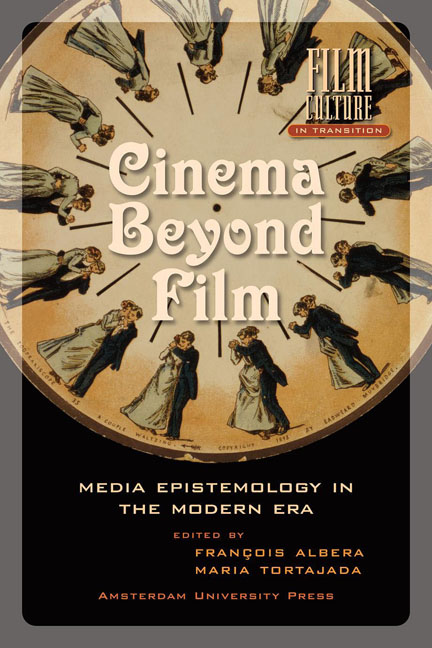Introduction to an Epistemology of Viewing and Listening Dispositives
Published online by Cambridge University Press: 22 January 2021
Summary
For some years now, scholars working in the History and Aesthetics of the Cinema Department of the University of Lausanne’s Faculté des Lettres have been actively engaged in research and teaching that stems from their belief that, at the present moment in time, one can no longer restrict one’s approach to cinema to the narrow field and specific object that were established in the early decades of the 20th century, and that culminated in the semiotics approach of the 1970s. Paradoxically enough, this apotheosis occurred just as the model that in circa 1906 had reflected the independent and specific nature of cinematography and the cinematographic institution was clearly becoming obsolete with the multiplication both of the modes of capturing film (first video, then the DVD, computers, mobile telephones, etc.) and of audiovisual communication support systems and media (in particular television, and more recently the Internet).
The ‘return’ to history on the one hand and the historicizing of aesthetics on the other hand – with the latter thereby bypassing an essentialist, ontological approach – are based on a new approach to the archive. They allow the researcher to widen the field of investigation and examine anew the different questions related to cinematographic ‘language’ and the problematics of representation – i.e., the practices and theories of viewing and listening which developed during the 19th century and were linked to the rapid industrial and technological development of western societies. The cinema is one of those instruments that condenses a whole series of distinctive characteristics of industrial and technological society (serialisation, the division of work, multiplication, mechanisation, standardisation, speed, globalization, etc.) – where a whole series of questions converges – from the social to the political, the medical to the ideological, the artistic to the anthropological, etc.
Since the middle of last century, it can be said that the field has been broadened by the arrival of the ‘mass media’ and mass communication in their relation to new mediums and media – the focus has moved from television to the Internet, digital technologies, and further beyond, to the issue of cloning. The key position that cinema occupied in the 1950s has consequently become relativized, even though its ‘model’ continues to organise much of the imagination in the shape of the procedures involved in the means of communication and media representation.
- Type
- Chapter
- Information
- Cinema Beyond FilmMedia Epistemology in the Modern Era, pp. 9 - 22Publisher: Amsterdam University PressPrint publication year: 2012



